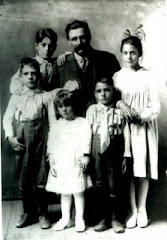Two lines of evidence point to that year:
1. Bible chronology
2. Bible prophecy.
This post will discuss Bible chronology.
Decades in advance, Bible students proclaimed that there would be significant developments in 1914*. What were these developments? What evidence points to 1914 as such an important year?
As recorded at Luke 21:24, Jesus said: "Jerusalem will be trampled on by the nations, until the appointed times of the nations ("the times of the Gentiles," King James Version) are fulfilled." Jerusalem had been the capital city of the Jewish nation -the seat of rulership of the line of kings from the house of King David. (Psalm 48:1, 2) However, these kings were unique among national leaders. They sat on "Jehovah's throne" as representatives of God himself. (1 Chronicles 29:23) Jerusalem was thus a symbol of Jehovah's rulership.
How and when, though, did God's rulership begin to be "trampled on by the nations"?
This happened in 607 B.C.E when Jerusalem was conquered by the Babylonians. "Jehovah's throne" became vacant, and the line of kings who descended from David was interrupted. (2 Kings 25:1-26) Would this 'trampling' go on forever? No, for the prophecy of Ezekiel said regarding Jerusalem's last king, Zedekiah:
"Remove the turban, and lift off the crown... It will certainly become no one's until he comes who has the legal right, and I must give it to him."
(Ezekiel 21:26, 27)
The one who has "the legal right" to the Davidic crown is Christ Jesus. (Luke 1:32, 33) So the "trampling" would end when Jesus became King.
When would that grand event occur? Jesus showed that the Gentiles would rule for a fixed period of time. The account in Daniel chapter 4 holds the key to knowing how long that period would last. It relates a prophetic dream experienced by King Nebuchadnezzar of Babylon. He saw an immense tree that was chopped down. Its stump could not grow because it was banded with iron and copper. An angel declared: "Let seven times pass over it." -Daniel 4:10-16
In the Bible, trees are sometimes used to represent rulership. (Ezekiel 17:22-24; 31:2-5) So the chopping down of the symbolic tree represents how God's rulership, as expressed through the kings at Jerusalem, would be interrupted. However, the vision served notice that this "trampling of Jerusalem" would be temporary -a period of "seven times." How long a period is that?
Revelation 12:6, 14 indicates that three and a half times equal "a thousand two hundred and sixty days." "Seven times" would therefore last twice as long, or 2, 520 days. But the Gentile nations did not stop "trampling" on God's rulership a mere 2,520 days after Jerusalem's fall. Evidently, then, this prophecy covers a much longer period of time. On the basis of Numbers 14:34 and Ezekiel 4:6, which speak of "a day for a year," the "seven times" would cover 2,520 years.
The 2,520 years began in October 607 B.C.E., when Jerusalem fell to the Babylonians and the Davidic king was taken off his throne. The period ended in October 1914. At that time, "the appointed times of the nations" ended, and Jesus Christ was installed as God's heavenly King. -Psalm 2:1-6; Daniel 7:13, 14.

From October 607 B.C.E. to October 1 B.C.E is 606 years. Since there is no zero year, from October 1 B.C.E, to October 1914 C.E. is 1,914 years. By adding 606 years to 1,914 years, we get 2,520 years.
*As early as 1823, John A. Brown, whose work was published in London, England, calculated the "seven times" of Daniel chapter 4 to be 2,520 years in length. But he was not clear on the date the prophetic time period began or when it would end. He did, however, connect these "seven times" with the Gentile Times of Luke 21:24.
In 1844, E.B. Elliott, a British clergyman, drew attention to 1914 as a possible date for the end of the "seven times" of Daniel, but he also set out an alternate view that pointed to the time of the French Revolution.
In 1875 in the August, September, and October issues of Herald of the Morning, N.H. Barbour helped to harmonize details that had been pointed out by others. Using chronology compiled by Christopher Bowen, a clergyman in England, published by E.B. Elliott, Barbour identified the start of the Gentile Times with King Zedekiah's removal from kingship as foretold at Ezekiel 21:25, 26, and he pointed to 1914 as marking the end of the Gentile Times.
Interestingly, Sir Isaac Newton (1642-1727) had written that Christ would return and reign "invisible to mortals."



















































































2 comments:
Wow. That's way over my head, but I appreciate the post, and the time it takes to study those kind of details.
I'm not a real kind of detail person.
I'm more of what's the bottom line? Am I going to heaven or hell? Probably neither. Just somewhere in between.
We learn alot at the Kingdom Hall some of it sticks.
Post a Comment